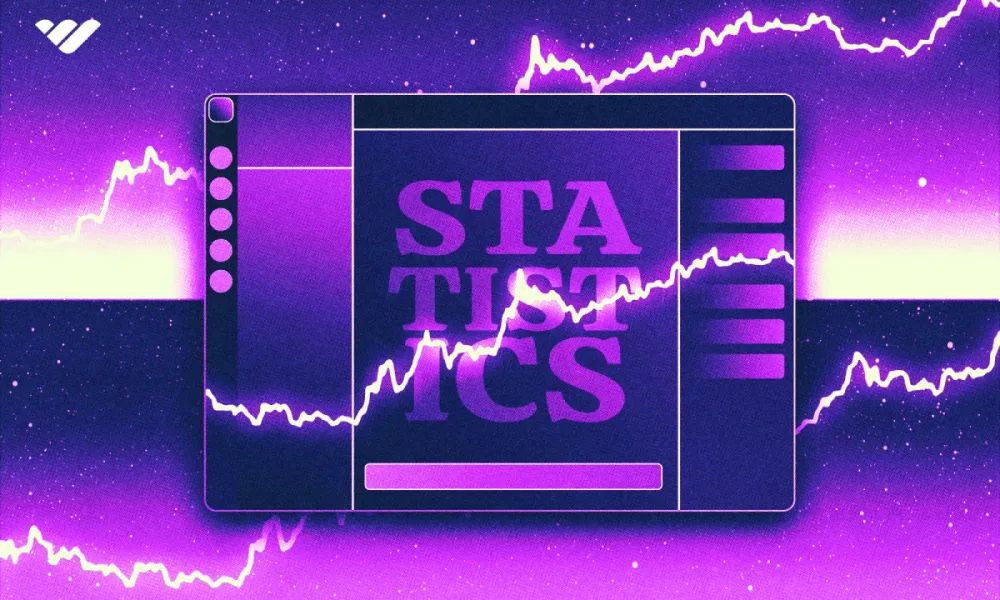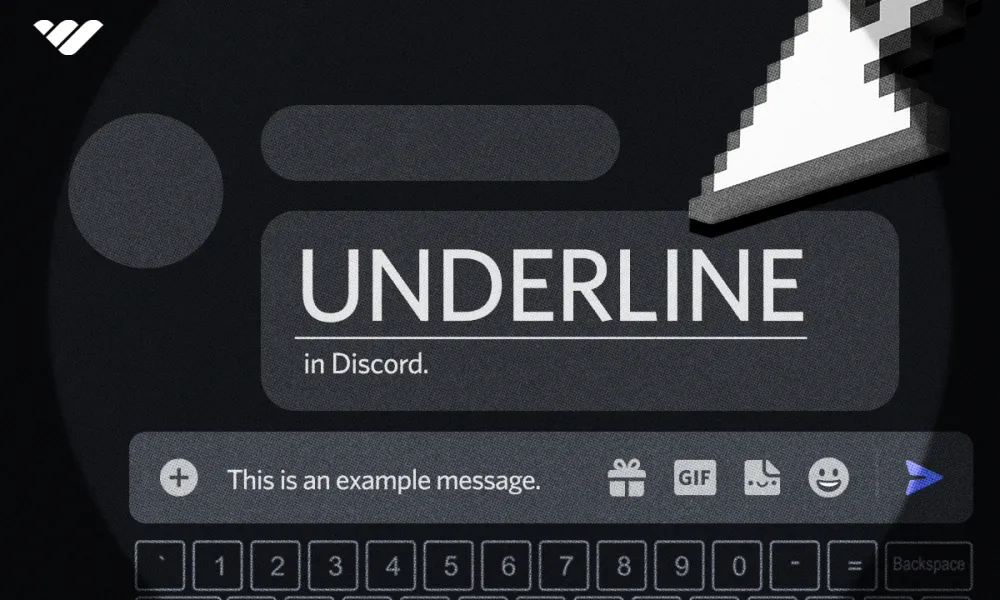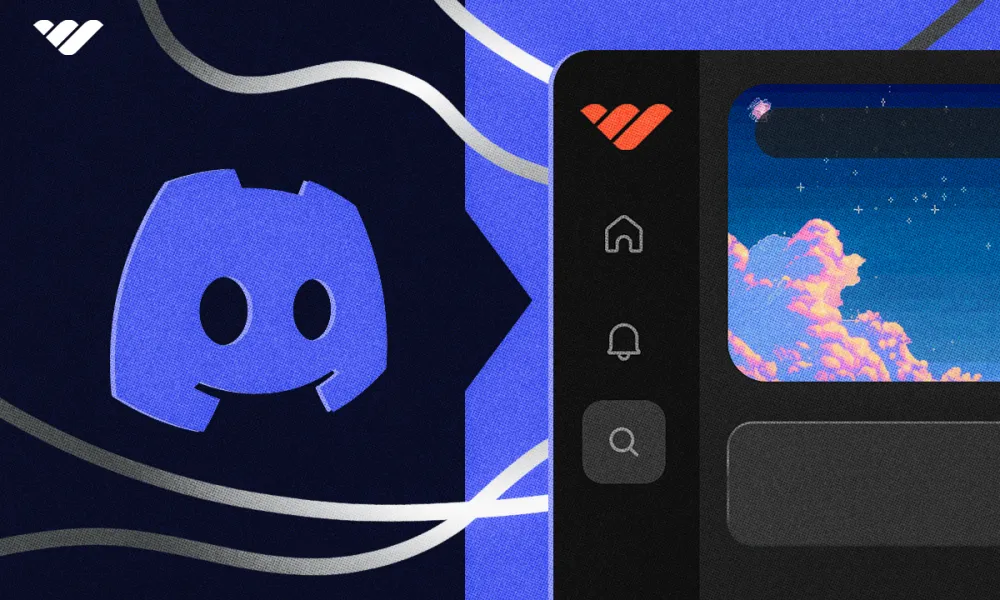A Discord server is a virtual space where you can communicate with other people. Read this guide to understand more about Discord servers, how they work, and how you can monetize your server.
Key takeaways
- Discord has 19 million active servers that function as virtual clubs for global communication.
- Friend servers comprise over 90% of Discord servers and remain invite-only with small memberships.
- Users can join up to 100 servers, or 200 with a Nitro subscription.
- Discord servers support up to 500 channels, 50 categories, and 1000 active threads maximum.
- Server boosts unlock enhanced features like increased emoji slots and higher audio quality.
A Discord server is a virtual space where you can communicate with other people. Discord is all about servers, and there are 19 million active of them. So, what are they, exactly?
Well, Discord servers can be explained as a virtual club. Think of your local book club, but it's online! There can be five members or five thousand - plus, there are no physical boundary limitations, so your server members can be from all around the world.
If we think about other communication apps like Telegram and WhatsApp, these apps are essentially chatrooms where you can communicate with different groups of people. What this means is that the activity on Telegram and WhatsApp happens within these chatrooms. This is the same for Discord - the majority of the activity on Discord happens within servers. However, unlike Telegram Channels and WhatsApp groups (which can host up to 200k and up to 1024 members respectively), Discord can host millions of people in one server.
So, let's take a closer look at what Discord servers are, where you can find them, and the different types of Discord Servers.
Different types of Discord servers
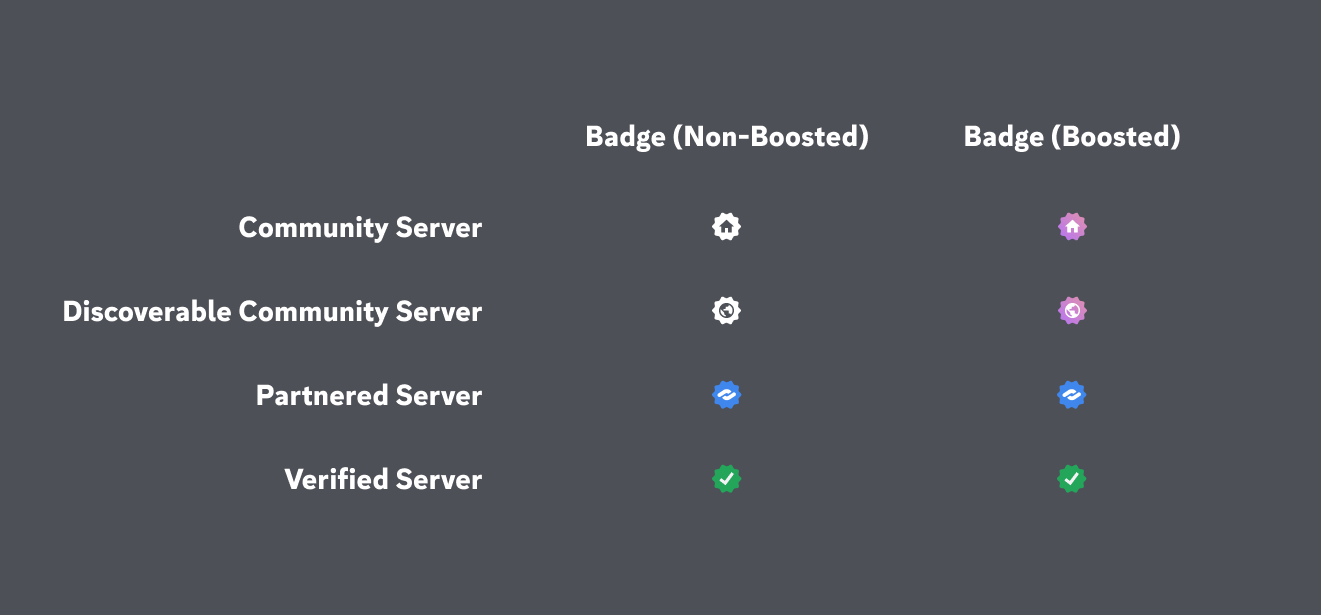
As we mentioned, almost all content under Discord is organized into servers. There are several types of them:
- Friend/private servers: Friend servers make up over 90% of servers in Discord, and they tend to have a small number of people in them, as their name suggests. This server type is invite-only, while others can be accessed through Server Discovery and might be listed in server directories.
- Public/community servers: These servers usually host more people than friend servers. The number can range from 1-100 to 400k-1m+. Community servers can access several features, like certain channel types and server insights. Public servers might be listed on server directories and can be accessed through Server Discovery.
- Paid access servers: These servers are somewhere between friend and public servers. though they can be better explained as a "private community server." These servers offer premium content or services to their members, and Discord users can buy access to them via services like Whop.com.
- Verified servers: The Verified Program's motto is "Let your fans know you're legit." As the motto suggests, the first requirement for a server to be verified is being "legit," i.e. the server can't be a fan-run community. The applicant should represent a registered business, brand, or public figure. Some examples of verified servers are Minecraft, Xbox, and Escape from Tarkov.
- Partner servers: The Partner Program is a legacy Discord program that rewards the best servers there are. Currently, there are around 4000 Partnered out of 19 million active servers, and it's no longer possible to become a Partner. Partnered servers had special perks like unique branding and badges for recognition.
Although Discord began as a gamer-focused app, this focus drifted when the pandemic hit, and people with all kinds of interests started joining Discord. As indicated by the server types above, there are servers for everything from sports picks, to meditation, to woodworking!
Where can I find Discord servers?
Since you know the types, now you can start looking for servers to join! There are several ways you can find Discord servers to join; try Whop.com's marketplace, for example. With the Whop marketplace you can filter for price and category, and sort by ratings, newly created, best sellers, etc.
Another option is to use server directories such as Discord.me, Disboard.org, and Discadia.com, which list thousands of servers. Once you click on an invite link, you'll be redirected to your Discord app and you will be greeted with an invite screen, you can join the server from there.
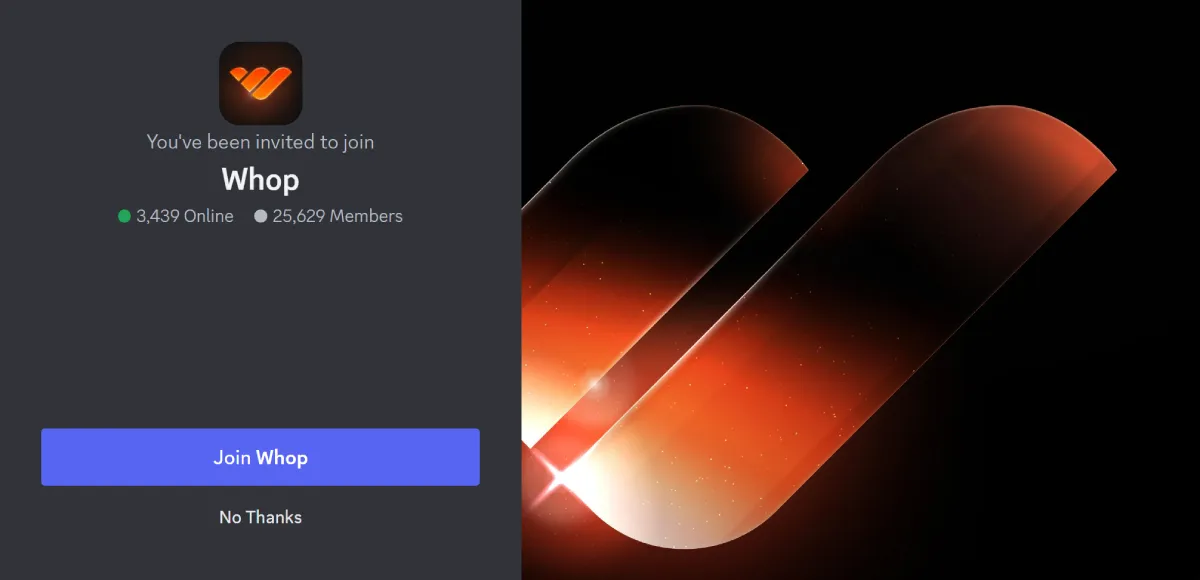
Once you join a server, you'll see that the server will appear column on the left of your Discord user interface. All the servers you join will be listed there, and you're free to reorder them and even organize them into folders with custom names and colors! There are also three icons that are not servers:
- Direct messages (Discord logo at the top): You will be able to see your friends, direct messages, message requests, and Discord's shop here through this icon
- Add a aerver (plus icon, second from the bottom): You're able to manually join servers using their invite link and create your own through this icon
- Explore discoverable servers (bottom icon): You can see the Server Discovery section, which acts as a server directory for public community servers through this icon.
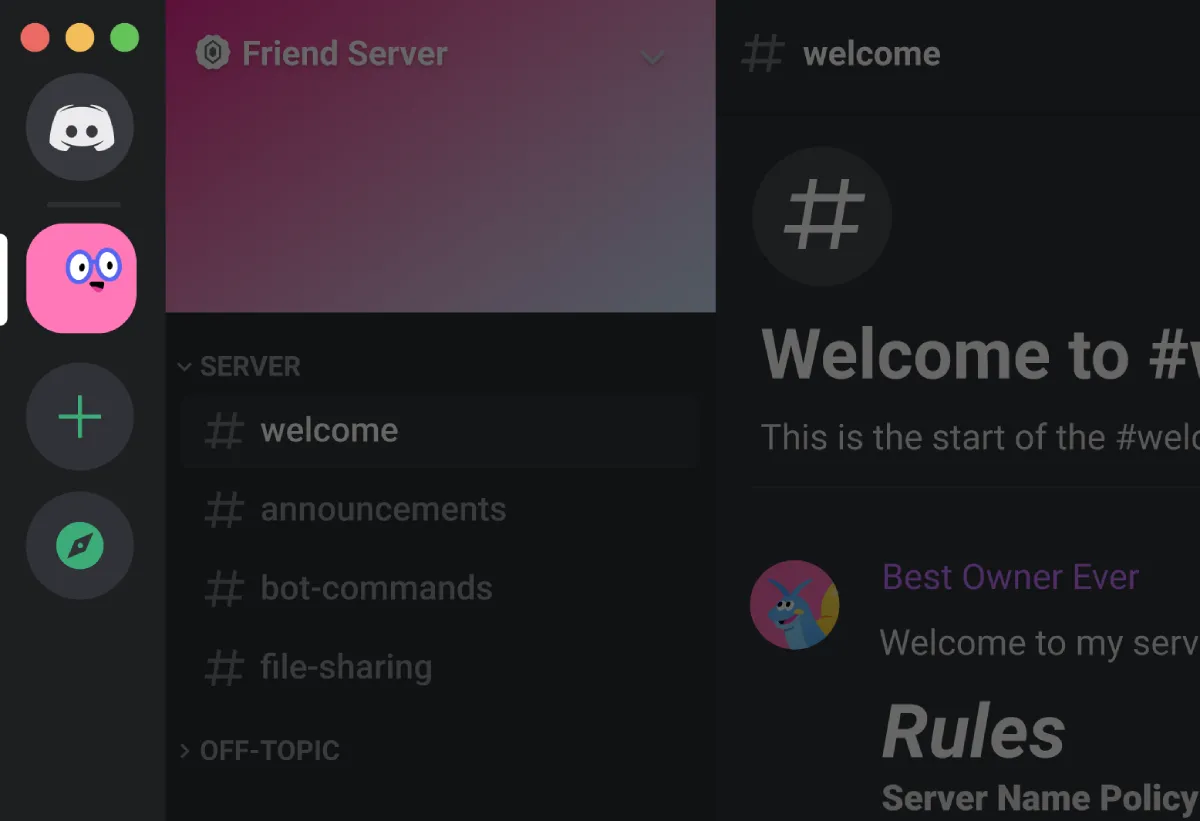
What's inside a Discord server?
You'll find various sections inside a server. Those sections include the channel list, member list, chat, message box, and more. The contents of a server start from the channel list column. That column hosts things like server names, server banners, events, channels, categories, voice chat controls, and user controls.
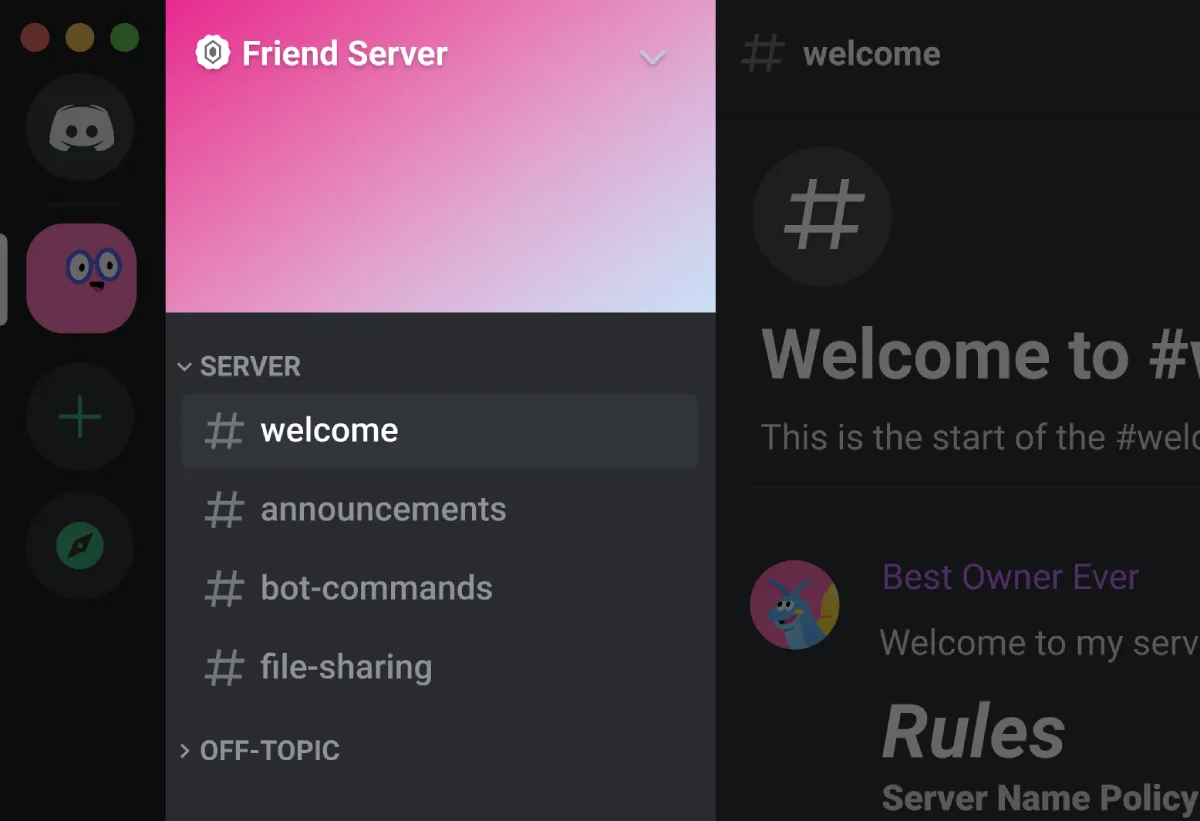
The actual messaging, voice chat, streams, or all other activity within Discord takes place to the right of the channel navigation column:
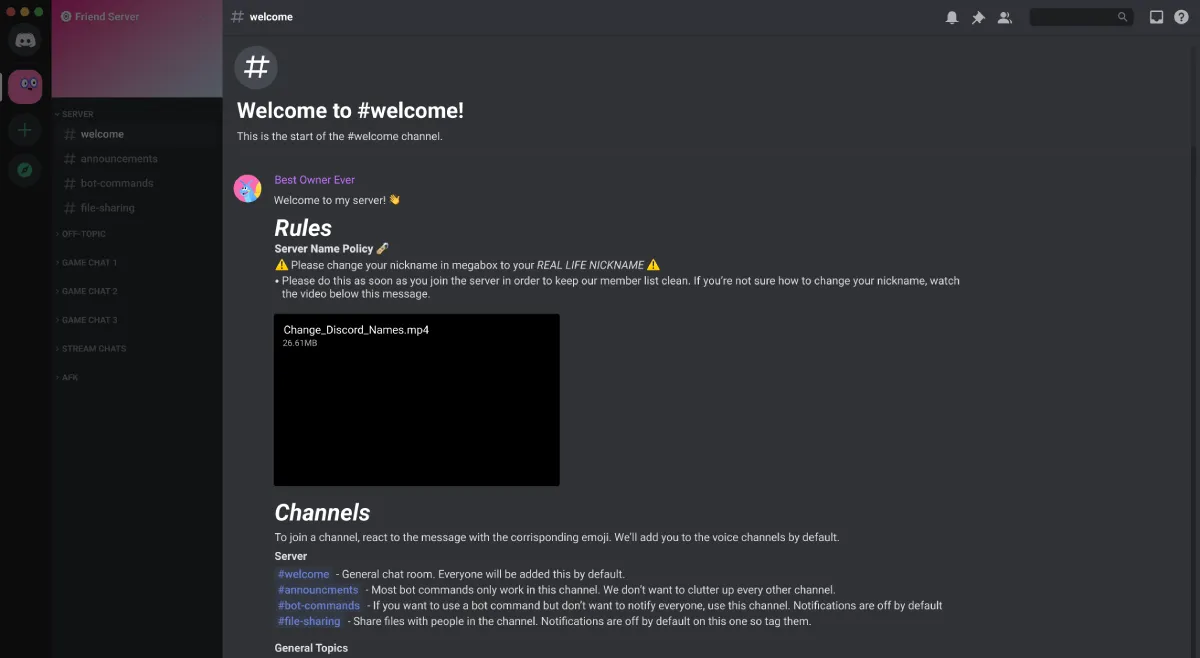
You can think of Discord servers as a folder of different chat groups called channels. There are several channel types, and they all have their own features. They're the essence of a server. Let's take a look at what is inside Discord server channels.
Channels in Discord servers
Channels are the communication streams within a Discord server. Let's see what channel types there are and their features:
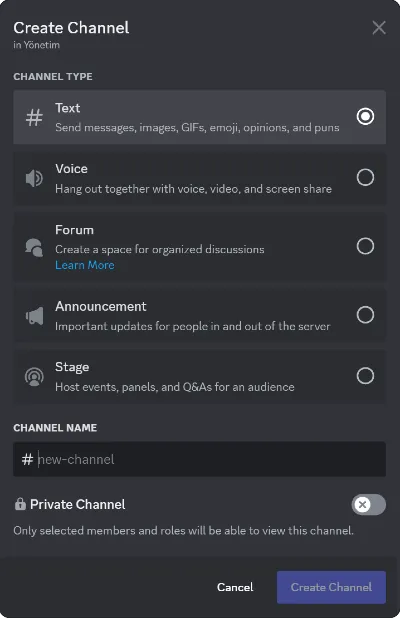
- Text channels: These channels are classic chat rooms where you can send messages, images, links, GIFs, emojis, voice notes, and even invite people to listen to the same music via Spotify! Of course, server staff can disallow any of these. Text channels can be marked as NSFW, which will disallow members below 18 from accessing its content.
- Voice channels: These channels work like a Skype or Zoom call. People can turn on their cameras, have a video chat, share their screen and stream for their friends, or play internal games like Chef Showdown, Gartic Phone, or Blazing 8s! Voice channels also have their own internal text channel. Some bots play music 24/7, and some servers use this feature in voice channels as "chilling rooms." Voice channels can be marked as NSFW as well. Staff can also set a user limit, allowing them to create "private voice channels."
- Forum channels: This channel type allows people to create forum posts. This allows the channel to stay organized without multiple topics intermingling with each other. Server staff can set up post tags and guidelines. Posts can also be sorted or searched! Members can also "Follow" posts to get notifications of new messages. This type also can be marked as NSFW.
- Announcement channel: This channel type has a self-explanatory name. Server staff usually use this type to post announcements to the members. The feature of this type is that people can "follow" this channel so that every time a new announcement is posted, the message will be relayed to their own server. The server needs to have the Community feature enabled to be able to have this type of channel.
- Stage channel: These channels work just like Clubhouse. People can host events, panels, and Q&As in stage channels. A select number of people have permission to speak, while listeners can "raise their hand" to request permission to speak.
- Rules or guidelines channel: This channel is self-explanatory as well; it will be sorted to the top of the channel list by default and will have a special header.
- Threads: These channels can be called sub-channels as well. They're created under a channel's message and will be displayed under that channel. People can join and leave the thread, which will be locked after an inactivity period determined by the staff.
Servers can't have an unlimited number of channels since there are limits. A server can have up to:
- 500 channels (no matter the type)
- 50 categories
- 1000 active threads (archived threads don't count)
All of these channel types have permission options that staff can edit to configure certain members' permissions to see a channel, send messages in it, connect to it, add reactions to it, send images in it, etc.
What are Discord server boosts?
If you have already been exploring Discord then you may be wondering what Server Boosts are. Server Boosts were introduced in June 2019, allowing servers to unlock three levels of perks, making the server even cooler. These features include but are not limited to increased emoji slots, higher stream quality, increased audio quality, server banners, custom role icons, and custom invite links (also known as vanity links.) Currently, Level 2 requires two boosts, Level 2 seven, and Level 3 fourteen. Users can receive two boosts with a Nitro subscription and can boost any server they want.
Servers can be customized in very different ways. This can be done through several server-specific features:
- Emojis: Servers can add regular and animated emojis so their members can use them. Using animated emojis requires a Nitro subscription. The regular limit of custom emojis is 50 (can be increased to 100, 150, and 250 with server boosts.)
- Stickers: Stickers are similar to emojis but bigger and can be triggered via text shortcuts. The regular limit for custom stickers is 5 (can be increased to 15, 30, and 60 with server boosts).
- Soundboard: A not-so-old feature, soundboard allows servers to set up custom 5-second-long audio files for members to play in voice channels. The regular limit of custom soundboard files is 8 (can be increased to 24, 36, and 48 with server boosts.)
- Roles: While almost all servers follow the standard practice of having a staff with clearly defined roles, the rest are almost always different server by server! There can be XP roles (which members earn depending on their text or voice chat activity), optional roles (which members can give to themselves; they can be cosmetic, favorite soccer teams, etc.), and many more! Servers with seven or more boosts (Level 2+) can add custom role icons to the roles to make them look even more fantastic.
- Setup: Every server is set up differently. While some have hundreds of channels, some only have five. This changes depending on several factors like member count, topic, activity, and purpose.
You can make money with your own server!
By now, you understand what Discord is, what Discord servers are, and how they work. With your newfound knowledge, you are now ready to create your own Discord server - and perhaps even earn money from your online community.
👉 If you have a server idea and want to make money from it, you can register as a seller on Whop.com, promote your server, and sell access to it! It takes less than 10 minutes to get started, and it has never been easier to generate income with your Discord server.


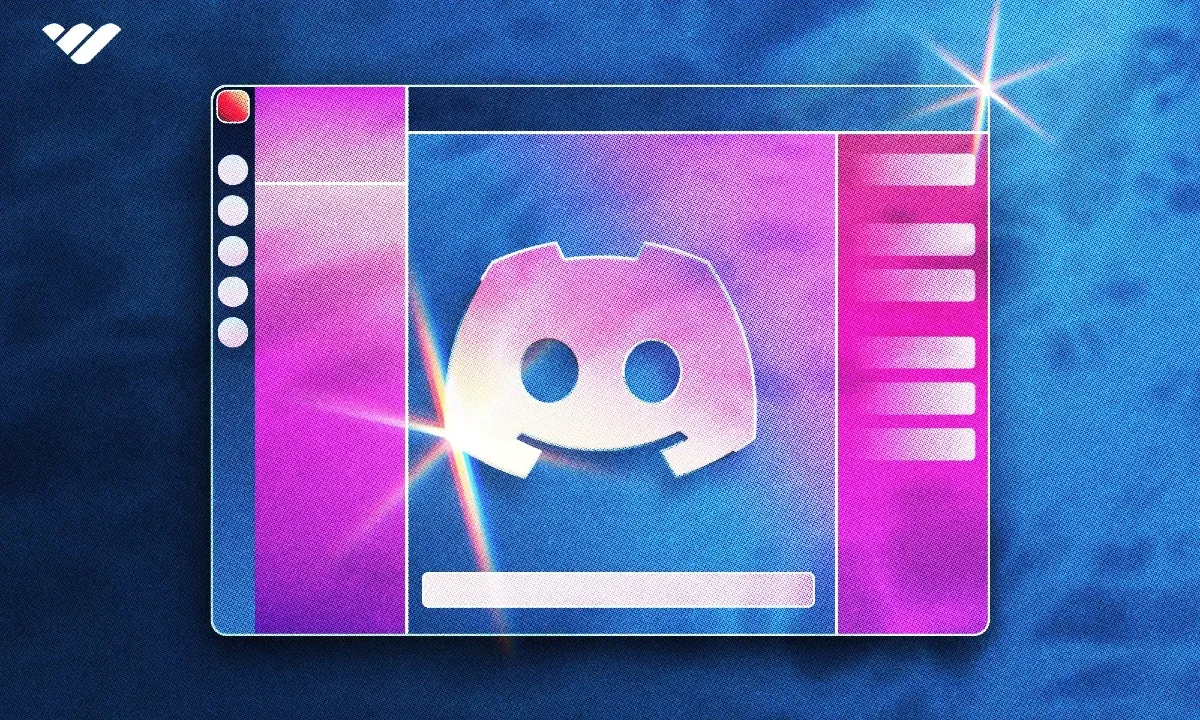
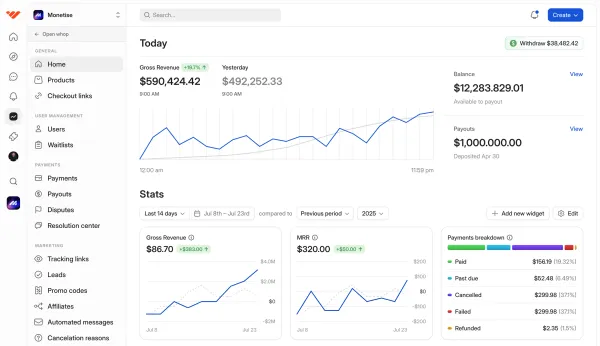
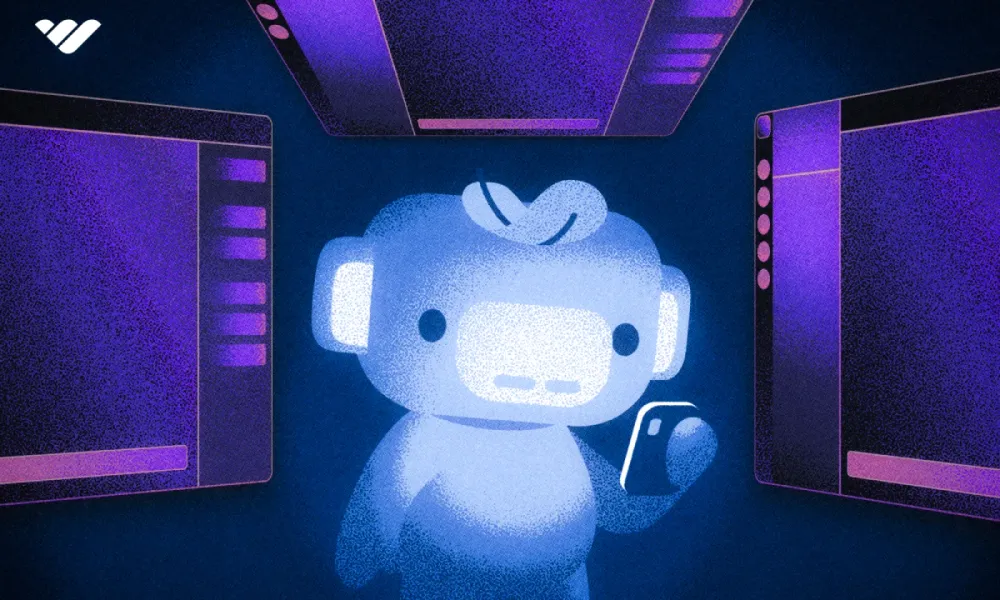
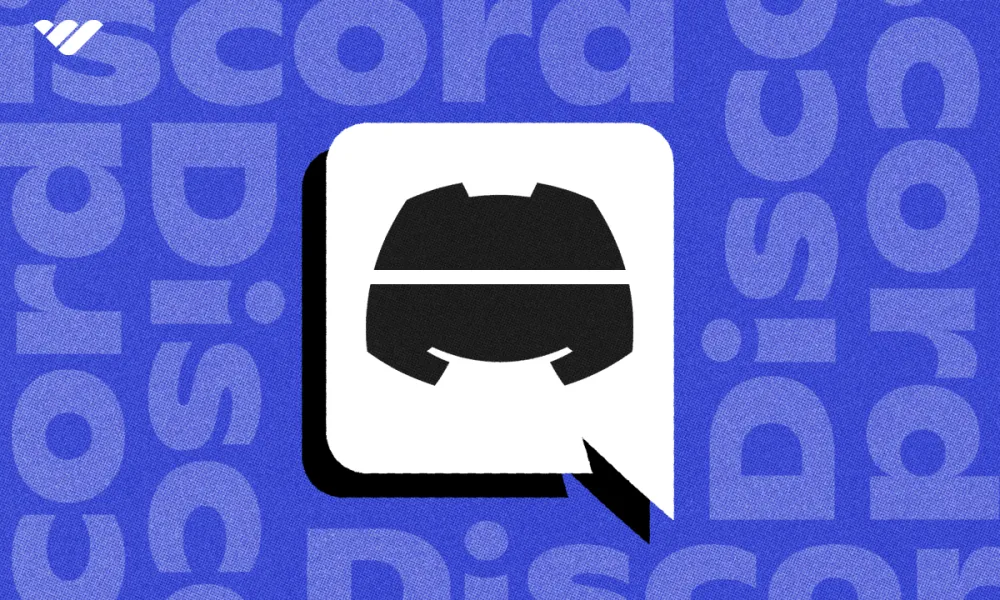
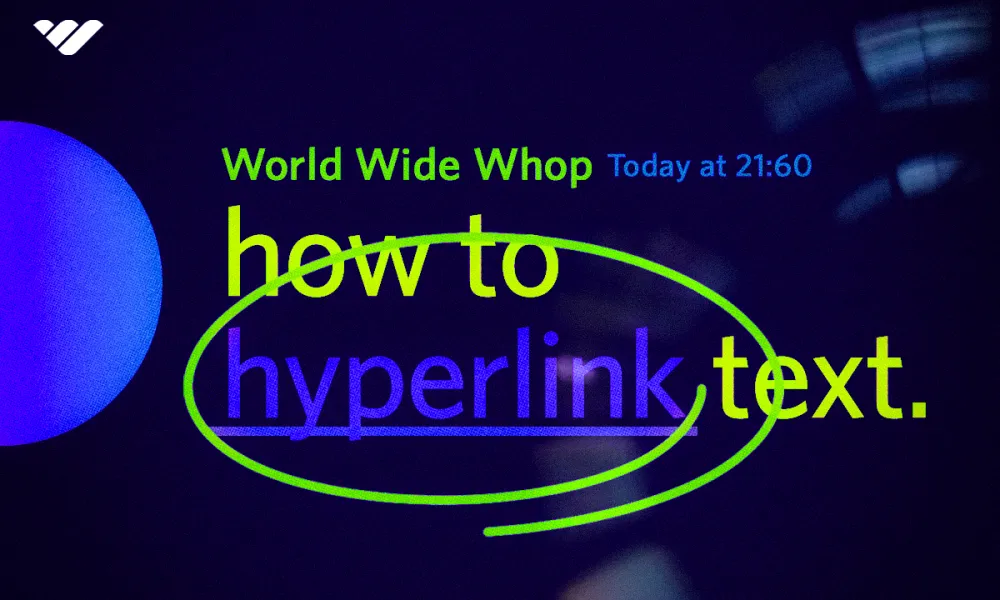
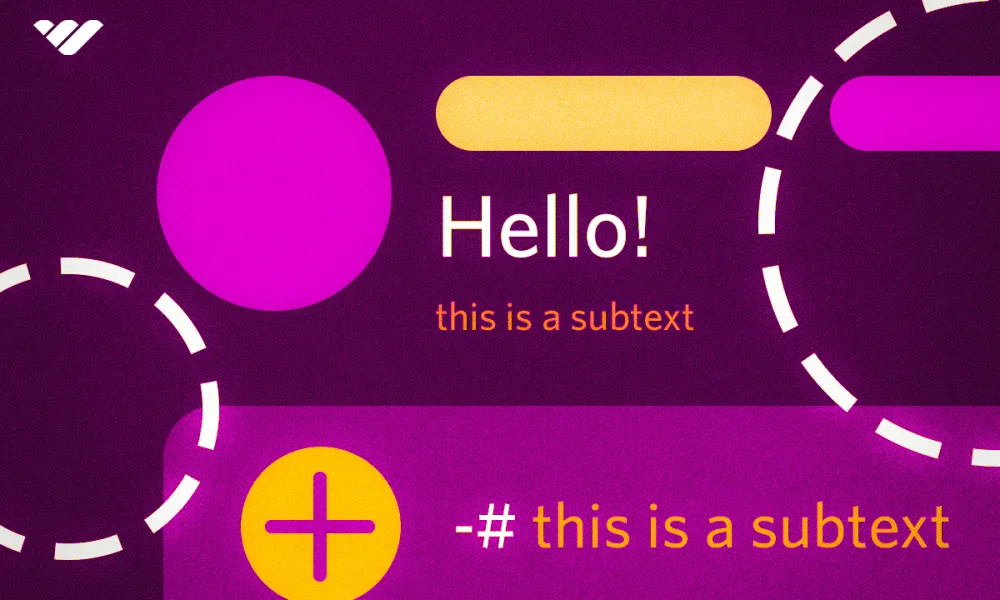
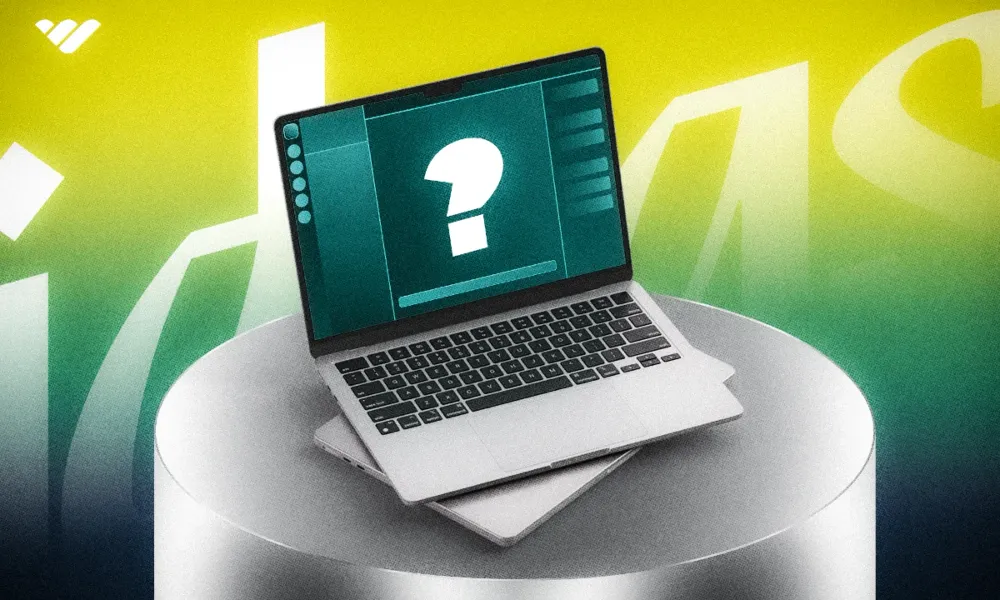
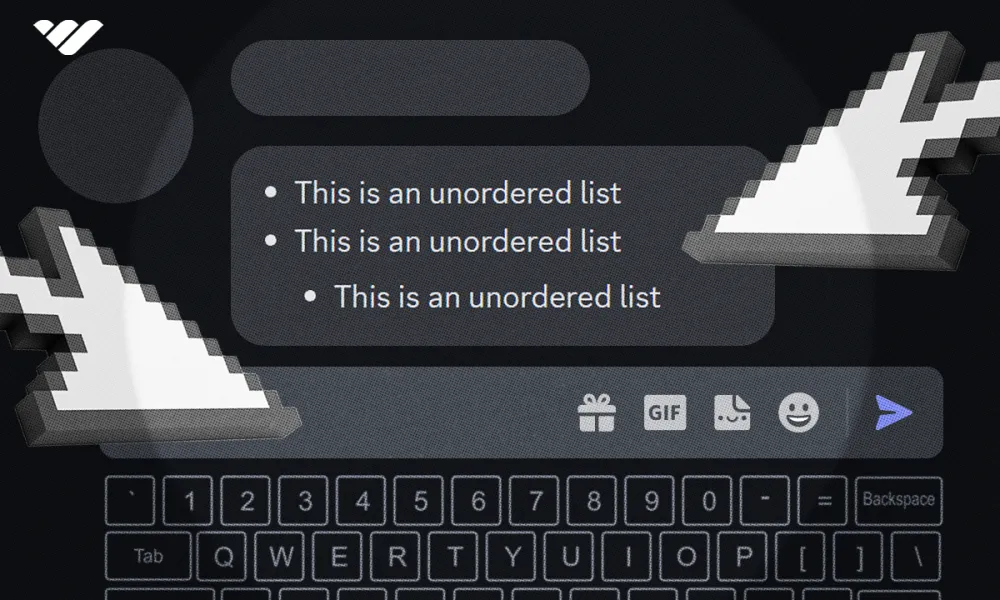
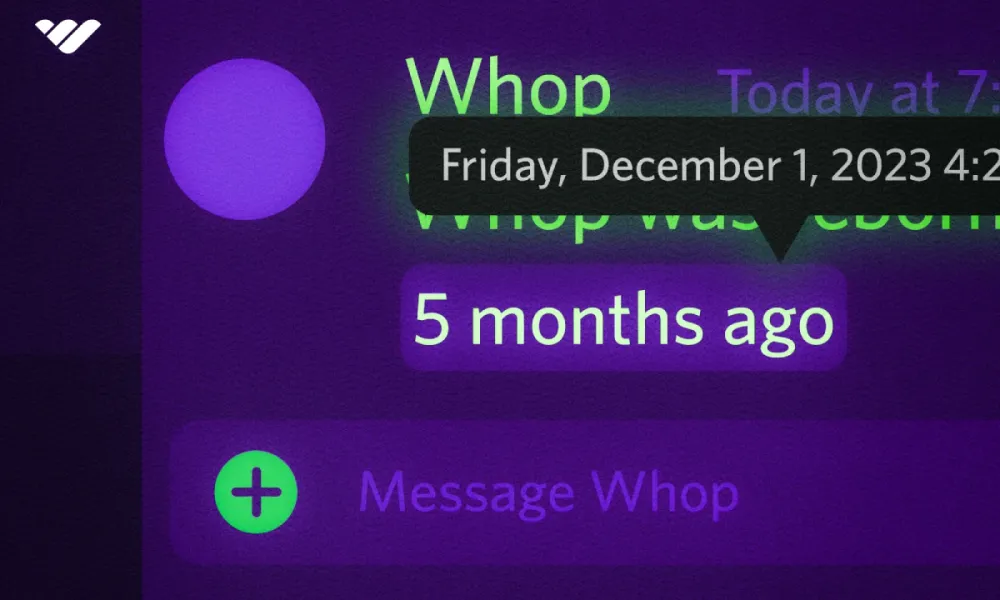
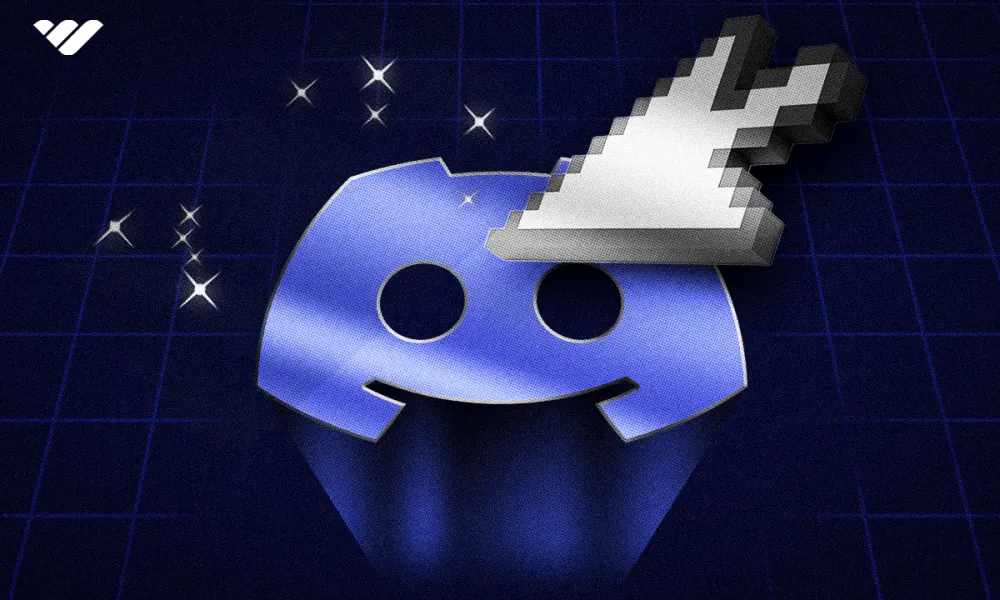
![Discord banner size: Complete updated guide [2026]](/blog/content/images/size/w1000/2024/05/Discord-Banner-Sizing-in-2024.webp)
